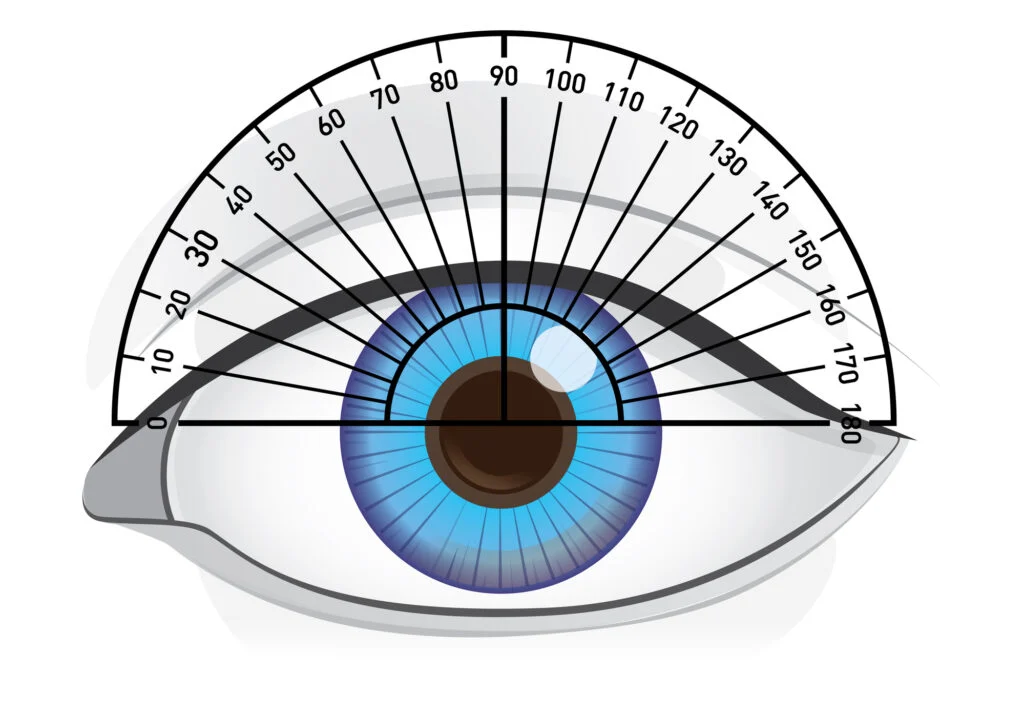When reading your eye prescription, you might need clarification on all the abbreviations and symbols you see. Understanding what they mean and what they mean for your eyesight can make all the difference in how you choose glasses. Prescription eyeglasses are corrective lenses designed to improve vision. They are tailored to an individual’s unique prescription, addressing common eye conditions like nearsightedness, farsightedness, astigmatism, and presbyopia. Available in a wide range of styles, frames, and lens types, prescription eyeglasses help enhance clarity and comfort for everyday activities.
Five main parameters are used to correct your eyesight: SPH, CYL, AXIS, ADD and PD.
Cylinder Power
Cylinder power (CYL value) is integral to your eyeglass prescription. It indicates the extra lens power needed for an irregularly curved eye or to correct Astigmatism. It’s also essential for people with presbyopia when the lens in your eyes becomes too weak to provide sharp vision.
If cylinder power is included in your prescription, it must also have an axis value. This number tells your eye doctor where to place the CYL power in your lenses.
Axis values are whole numbers from 1 to 180. The number 90 represents the vertical meridian of your eye, while 180 represents the horizontal one.
When a cylinder power is added to an axis value, the vertical meridian gets the extra -0.50 D from the cylinder column. The horizontal meridian doesn’t get any extra power from the axis. The axis helps your eye care professional know where to position the muscle so it’s more effective for you.
The sphere, cylinder and axis values are the most critical parts of your eyeglass prescription. When you understand what does axis mean in your glasses prescription, the numbers and their meaning, you can make better decisions about your eyeglasses. You’ll be able to choose the right pair and have your vision corrected to the best possible level!
Axis
Axis is a term that you’ll see on your eyeglasses prescription. It describes the direction in which your optician needs to position any cylindrical power in your lenses (this is only required for Astigmatism).
A normal axis in a healthy human eye is horizontal and aligned with the retina. This allows light to be focused at a single point on the retina so that vision is clear.
When you have Astigmatism, your cornea’s shape changes, making it difficult for light to focus at a single point on the retina. Your lens must be slightly curved to compensate for the eye-axis difference.
A strong eye axis can help make eyesight more transparent and stable. On the other hand, a weak eye axis can cause blurry vision and make it difficult to focus.
Astigmatism can be corrected with glasses or contact lenses. Talk to your doctor about this during an eye exam.
An axis number is a precise location, much like a graph’s x and y axes. It tells your optician how to orient your lens so the cylinder has no power at the axis location. This is important because it can prevent the cylinder from causing Astigmatism in your eye.
ADD
Attention Deficit Disorder (ADD) is the most common mental disorder in children and is rising in adults. It is associated with several symptoms, including difficulty concentrating, daydreaming, and not completing tasks. It can also affect interpersonal relationships.
ADD is often paired with medication or talk therapy to help manage these symptoms. The specific medications depend on each individual’s needs and preferences.
If you have ADD, you may need reading glasses or bifocals to assist in reading more effectively. Your eye prescription usually contains an ADD power, indicating the required additional magnifying power. This number will be identical in both eyes and can range between +0.75 and +3.00 D.
If you have Astigmatism, you may have a CYL & AXIS number on your prescription. The cylinder and the axis are two of the most critical parameters in correcting Astigmatism.
The cylinder measures in diopters the degree of Astigmatism, and the axis shows where that Astigmatism is located on the cornea. This is like a ‘bread and butter’ number – you can’t have one without the other!
The cylinder and the axis are measured in degrees, and a number between 1 and 180 shows where that Astigmatism is. This is important because it lets you know where to place the prism in your eyeglasses if you use them for double vision.
Contact Lenses
Contact lenses are a type of lens that is designed to correct vision problems, usually refractive errors such as nearsightedness, farsightedness and Astigmatism. They are a popular alternative to glasses.
Your eye care professional (ECP) evaluates your eyes to determine the contact lens that best satisfies your vision correction needs. They consider how your eyes are shaped, physiology, and personal preferences.
They also examine the types of lenses available and the features you may need to accommodate your lifestyle or medical condition. Then they give you a contact lens prescription, which tells you which lenses to purchase.
Soft lenses are made of plastics that contain a lot of water, which makes them pliable and comfortable to wear. This water absorbs and holds onto moisture, allowing the lenses to stay soft and flexible even when your eyes are dry.
Silicone hydrogel lenses are a more advanced type of soft contact, which allow more oxygen to reach your cornea than regular hydrogels. They are also thought to dehydrate less when worn for extended periods, allowing your eyes to keep more moisture they need to be healthy.
Rigid gas permeable (RGP) contacts are rigid lenses extending over a larger surface area of your eye to cover the sclera (the white part). These lenses are more durable and provide better vision than soft and silicone hydrogel lenses.











